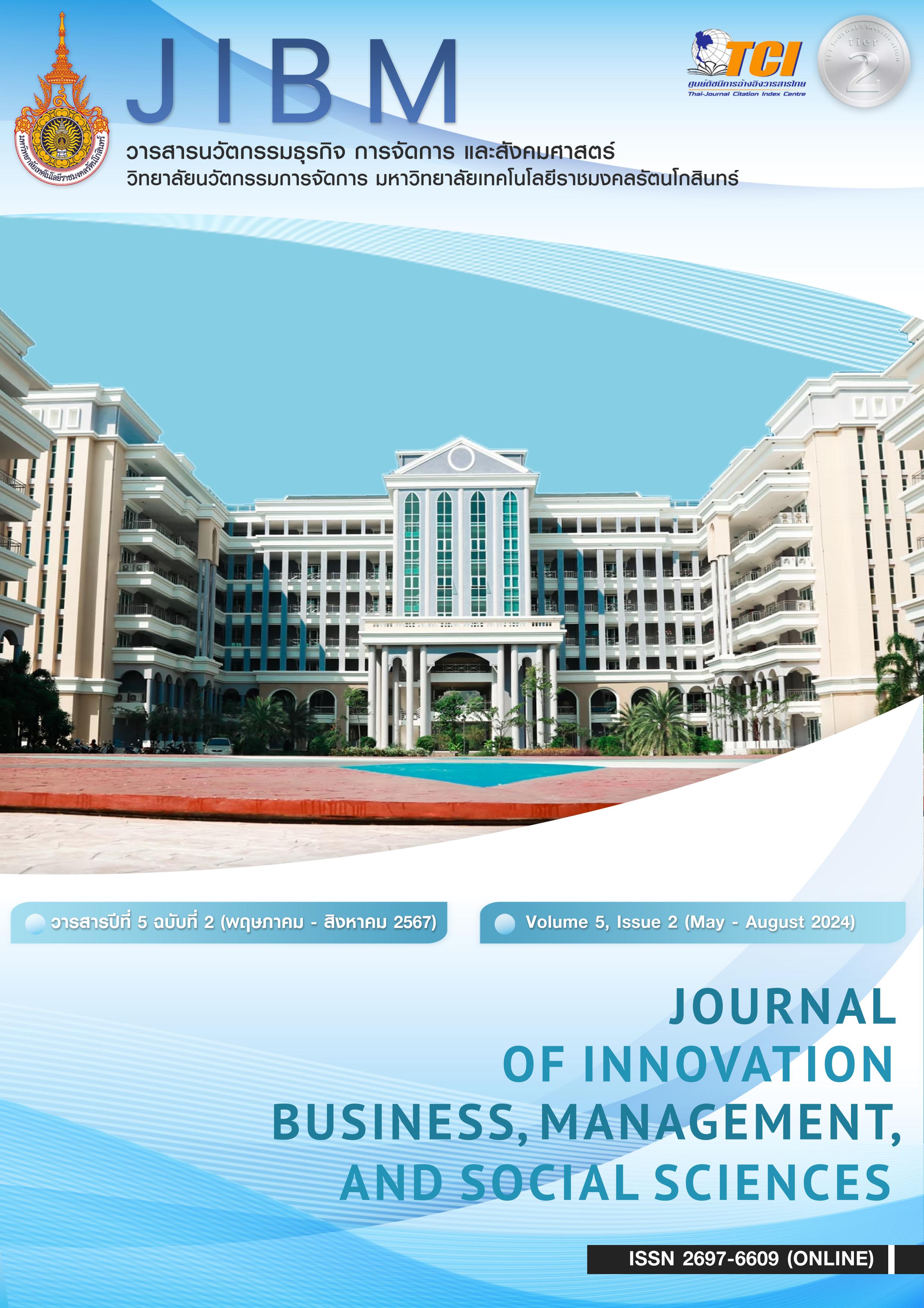The Influence of Product and Service Quality on Coffee Shop Entrance Fees: An Application of Hedonic Price Theory
คำสำคัญ:
Hedonic Pricing Theory, entrance fees, coffee shopบทคัดย่อ
The purpose of this research was to study factors affecting coffee shop entrance fees according to the characteristics of the coffee shop. This research applied hedonic pricing theory to determine entrance fees of coffee shops, which were location, product characteristics, and service. The secondary data was retrieved from Facebook and Google Maps business information of 134 coffee shops in tourist towns in Thailand. The data was analyzed by regression analysis. The research found that factors determining entrance fees were consistent and statistically significant with the theory, especially the mountain view, and the redemption of entrance fees for products. However, the social media factors, Facebook followers, and Google Maps ratings were not significant to entrance fees, which implies that there was a problem with the quality of followers and rating of coffee shops.
เอกสารอ้างอิง
Abrate, G., Capriello, A., & Fraquelli, G. (2011). When quality signals talk: Evidence from the Turin hotel industry. Tourism Management, 32(4), 912-921.
Andersson, D.E. (2010). Hotel attributes and hedonic prices: an analysis of internet-based transactions in Singapore's market for hotel rooms. The Annals of Regional Science, 44, 229-240.
Anglin, P.M., & Gencay, R. (1996). Semiparametric estimation of a hedonic price function. Journal of applied economics, 11(6), 633-648.
Annaraud, K. (2007). Restaurant menu analysis: can we go further. Journal of Foodservice Business Research, 10(4), 25-37.
Atkinson, H., & Jones, P., (1994). Menu engineering: managing the foodservice micro-marketing mix. Journal of Restaurant and Foodservice Marketing, 1(1), 37–55.
Chossat, V., & Gergaud, O. (2003). Expert opinion and gastronomy: The recipe for success. Journal of Cultural Economics, 27, 127-141.
De Silva, D. G., Elliott, C., & Simmons, R. (2013). Restaurant wars: spatial competition in UK restaurants. Univ. Management School.
Espinet, J.M., Saez, M., Coenders, G., & Fluvia, M. (2003). Effect on prices of the attributes of holiday hotels: a hedonic process approach. Tourism Economics, 9(2), 165–177.
Fogarty, J. J. (2012). Expert opinion and cuisine reputation in the market for restaurant meals. Applied Economics, 44(31), 4115–4123.
Hinterhuber, A. (2008). Customer value‐based pricing strategies: why companies resist. Journal of business strategy, 29(4), 41-50.
Jeong, E., & Jang, S. S. (2011). Restaurant experiences triggering positive electronic word-of-mouth (eWOM) motivations. International Journal of Hospitality Management, 30(2), 356-366.
Ladd, G. W., & Suvannunt, V. (1976). A model of consumer goods characteristics. American Journal of Agricultural Economics, 58(3), 504-510.
Lancaster, K. J. (1966). A new approach to consumer theory. Journal of political economy, 74(2), 132-157.
Litvin, S. W., Goldsmith, R. E., & Pan, B. (2008). Electronic word-of-mouth in hospitality and tourism management. Tourism management, 29(3), 458-468.
Loureiro, SMC, Almeida, M., & Rita, P. (2013). The effect of atmospheric cues and involvement on pleasure and relaxation: The spa hotel context. International Journal of Hospitality Management, 35, 35-43.
Luca, M., (2016). Reviews, reputation, and revenue: the case of Yelp.com. In: Harvard Business School NOM Unit Working Paper, Paper No. 12-016.
Marn, M. V., Roegner, E. V., & Zawada, C. C. (2004). The price advantage. John Wiley & Sons.
Nagle, T. T., & Hogan, J. E. (2006). The strategy and tactics of pricing: A Guide to Growing More Profitably. 4th ed. Taylor & Francis Group.
Parsa, H.G., Gregory, A., & Terry, M. (2010). Why do restaurants fail? Part III: An analysis of macro and micro factors. Emerging Aspects Redefining Tourism and Hospitality, 1(1), 16–25.
Parsa, H.G., Self, J.T., Njite, D., & King, T. (2005). Why restaurants fail. Cornell Hotel and Restaurant Administration Quarterly, 46(3), 304–322.
Raab, C., Mayer, K., Kim, Y., & Shoemaker, S. (2009). Price-sensitivity measurement: a tool for restaurant menu pricing. Journal of Hospitality & Tourism Research, 33(1), 93 – 105.
Rosen, S. (1974). Hedonic prices and implicit markets: product differentiation in pure competition. Journal of Political Economy, 82(1), 34–55.
Ryu, K., & Han, H. (2010). Influence of the quality of food, service, and physical environment on customer satisfaction and behavioral intention in quick-casual restaurants: Moderating role of perceived price. Journal of Hospitality & Tourism Research, 34(3), 310-329.
Ryu, K., Lee, H. R., & Kim, W. G. (2012). The influence of the quality of the physical environment, food, and service on restaurant image, customer perceived value, customer satisfaction, and behavioral intentions. International journal of contemporary hospitality management, 24(2), 200-223.
Shoemaker, S., Dawson, M., & Johnson, W. (2005). How to increase menu prices without alienating your customers. International Journal of Contemporary Hospitality Management, 17(7), 553-568.
Yang, C. Y., & Chang, T. Y. (2011). Binomial real option pricing for restaurant menu analysis. Cornell Hospitality Quarterly, 52(3), 273–282.
Yim, E. S., Lee, S., & Kim, W. G. (2014). Determinants of a restaurant average meal price: An application of the hedonic pricing model. International Journal of Hospitality Management, 39, 11-20.
Zeithaml, V. A., Bitner, M. J., & Gremler, D. D. (2006). Services Marketing Integrating Customer. Focus Across the Firm. 4th ed. McGraw-Hill, New York.
Zhang, Z., Ye, Q., Law, R., & Li, Y. (2010). The impact of e-word-of-mouth on the online popularity of restaurants: a comparison of consumer reviews and editor reviews. International Journal of Hospitality Management, 29(4), 694–700.



